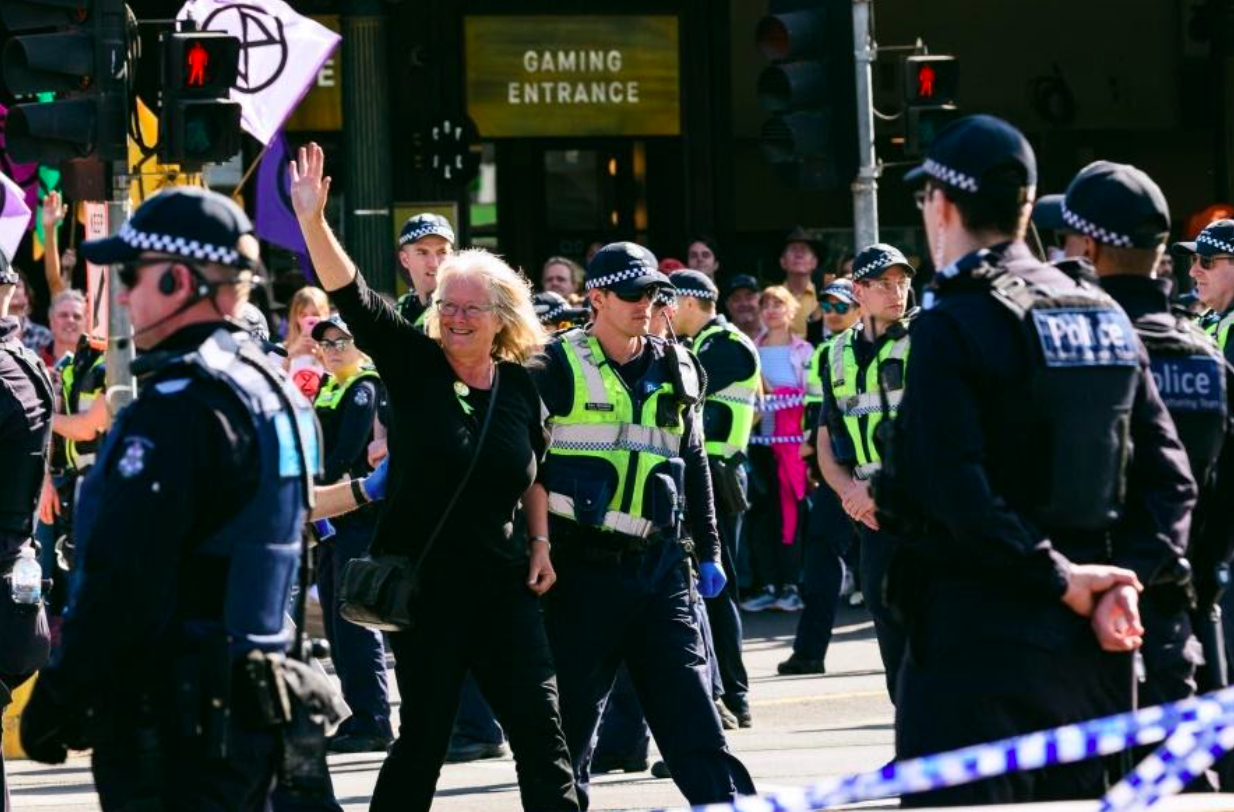
Magistrate considers 'emergency defence' in XR case
Extinction Rebellion Australia, 12 Sept 2021
Jane Morton tells Melbourne Magistrates Court that mass civil disobedience is a warranted and reasonable response to the ‘extraordinary emergency’ of climate breakdown.
On Monday 9 August, as the IPCC Report was making international headlines, XR Rebel, Jane Morton, faced the Melbourne Magistrates Court to argue that mass civil disobedience is a warranted and reasonable response to the ‘extraordinary emergency’ of climate breakdown. She was contesting charges of obstructing a footpath and road during the three-hour blockade of Princes Bridge in spring 2019, when over 300 rebels peacefully congregated to demand climate action. It was the first time XR had held a major Melbourne road for any significant length of time.
Of the 43 rebels arrested that day, most received a fine and diversion, or a conviction if they had a previous record. Jane Morton chose to defend herself in court, seeking a verdict of not guilty by virtue of a ‘sudden or extraordinary emergency’, in the hope of setting a precedent for climate activism in Australia. (Two other rebels were to join this defence but the cases were separated in the chaos of 2020.)
The emergency defence, applicable to all criminal offences, requires that the defendant (a) reasonably believed there was a sudden or extraordinary emergency; (b) reasonably believed that there was no alternative legal way of addressing the emergency and; (c) that the action was reasonable.

This is an emergecy. Image: Bushfire by Bertknot on Flikr, CC-By-SA-2.0
Jane sought coaching on self-representation, and advice from lawyers, before finally arriving at court, via Webex, on 9 August.
‘Representing myself was an interesting experience – harder in some ways than I expected and easier in others,’ Jane said.
‘I had a Signal chat with 50 rebels watching proceedings and giving me advice. The most helpful advice was that I could challenge an unlimited number of the prosecution’s questions. I had great success with some of them, including managing to get a question, mentioning scientists disagreeing climate change was real, ruled out of order because it embedded a falsehood! Also, as I was representing myself, the magistrate gave me quite a bit of lee-way. I was able to present a short version of the Heading for Extinction talk, plus a history of the grassroots climate emergency movement – PowerPoint slides and all – to argue the case for an extraordinary emergency, the failure of past methods to prove effective and the XR theory of change.’
At the end of the five-hour trial, the magistrate—undecided—asked prosecution and defence for further legal submissions on the emergency defence.
the most important point—that there is a ‘reverse onus of proof’—has not been challenged.
Drawing on the work of other activists and their lawyers, Jane presented a seven-page document to the magistrate this week. The prosecution have already objected to much of the submission, however the most important point—that there is a ‘reverse onus of proof’—has not been challenged. The prosecution must prove, beyond reasonable doubt, that (a) there is no extraordinary emergency, and/or (b) there are other ways to bring about the changes that are needed within the time available, and/or (c) that blocking the bridge as a way of launching a campaign of mass civil disobedience was not a reasonable response to the emergency.
Stay tuned for a continuation of the case, or a verdict, within the next few weeks.
The extraordinary emergency is here. So is the rebellion.